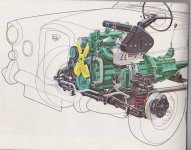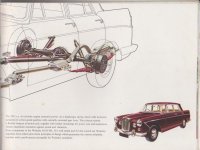-
 Hi Guest!
Hi Guest!
You can help ensure that British Car Forum (BCF) continues to provide a great place to engage in the British car hobby! If you find BCF a beneficial community, please consider supporting our efforts with a subscription.
There are some perks with a member upgrade!**Upgrade Now**
(PS: Subscribers don't see this gawd-aweful banner

Tips
- We have a special forum called "Member Articles" where you can submit actual articles for consideration for publication. Learn More
- Don't have an Avatar? If not, your avatar will default to the 1st character in your username. Go into "Account Details" to change your Avatar.
- Some basic forum navigation info: click
Hey - did you know if you click on the title of a thread it will take you to the first unread post since you last visited that thread?
- Hey Guest - Is your British Car Club in our Clubs database? If not, send me a PM - Basil

- Looking for a local club? Click the "Clubs" tab above and browse hundreds of clubs world-wide.
- Add Android or iPhone APP: click
- Did you know - any picture or video you add in your posts in any marque-specific forum will also get added to the Media Gallery automatically.
- A few more tips about posting and replying: click
- Hey there Guest - be sure to keep your profile page up to date with interesting info about yourself: learn more
- More tips and tricks on Posting and Replying: click
 STOP!! Never post your email address in open forums. Bots can "harvest" your email! If you must share your email use a Private Message or use the
STOP!! Never post your email address in open forums. Bots can "harvest" your email! If you must share your email use a Private Message or use the  smilie in place of the real @
smilie in place of the real @
- Want to mention another member in a post & get their attention? WATCH THIS

- So, you created a "Group" here at BCF and would like to invite other members to join? Watch this!
- Hey Guest - A post a day keeps Basil from visiting you in the small hours and putting a bat up your nightdress!
- Hey Guest - do you know of an upcoming British car event?
 Pretty Please - add it to our Events forum(s) and add to the calendar! >> Here's How <<
Pretty Please - add it to our Events forum(s) and add to the calendar! >> Here's How << 
- Hey Guest - you be stylin'
Change the look and feel of the forum to fit your taste. Check it out
- If you run across an inappropriate post, for example a post that breaks our rules or looks like it might be spam, you can report the post to the moderators: Learn More
- If you would like to try some different "looks" or styles for the site, scroll to the very bottom, on the left and click the Style Selector.
You are using an out of date browser. It may not display this or other websites correctly.
You should upgrade or use an alternative browser.
You should upgrade or use an alternative browser.
Austin Healey 3000 Cylinder Heads
- Thread starter BN6
- Start date
Randy Forbes
Yoda
Offline
I take it you're not where the head is, as that's easy to determine; just pick it up!The only two casting numbers I have seen on Healeys are AEC 721 and AEC 960
I also wonder if it is aluminum?
Dave
Offline
Since BN6 is in the UK, it might be aluminium. Mine has AEC 721 cast into it.
Offline
Since BN6 is in the UK, it might be aluminium. Mine has AEC 721 cast into it.
John - do you have a DW aluminum head?
The stock 100-6 head is the AEC 721.
Offline
Yes, mine is from DW. I think the AEC 721 head was used until the thermostatic starting carbs were introduced. That’s the difference between them.John - do you have a DW aluminum head?
The stock 100-6 head is the AEC 721.
BN6
Member
Offline
Thank you for the replies, no its not aluminium its 100% cast iron, I have just had hot tanked and a light dry blast before painting. The head is definitely from a Healey but I cannot reference those numbers.
View attachment 54800
View attachment 54801
View attachment 54802
View attachment 54800
View attachment 54801
View attachment 54802
Last edited:
bob hughes
Luke Skywalker
Offline
You say that the head is from a Healey, but lots of 2.600 - 3000 Austins, Wolsleys and Morrises shared the same basic engines and indeed through the ages the saloon engines have been used in the Healeys, modified of course.
Could the head be from one of them? or would the casting references be the same as the Healeys?

Bob
Could the head be from one of them? or would the casting references be the same as the Healeys?

Bob
bob hughes
Luke Skywalker
Offline
Danny, they did until the new head came out, now I don't know if there was a different pattern to the chambers in the head or what have you, but a number of restorers on this side of the pond use these engines to replace broken Healey ones.

Bob

Bob
Randy Forbes
Yoda
Offline
While I cannot quote the passage, nor from which Healey Marque history book, I too am of the understanding that the detachable intake manifold was only used on the Healey sportscars.Bob, yes blocks are the same externally just different compression pistons. The saloons did not use the new 6-port head however in production. As you say many Wolseleys and Westminsters pillaged for their engines.
I was born & bred in London S.E.5. BTW.
Danny
bob hughes
Luke Skywalker
Offline
Well, I must bow to the collectives superior knowledge.
Following some research I must say that I can only find 1 photo that shows the removable intake manifold on an A110, and that surprises me, as I know that I have read at least two articles where the Healey head had been adopted for the saloon cars, see extract of one source below.
The new A110 retained the same basic unit-construction chassis/monocoque as the original A99, but there was a 2-inch longer wheelbase (arranged by moving the back axle rearwards on its springs) which allowed modified wheelarches to be designed and more space to be provided in the back seats. Also at the rear was a newly-installed transverse shock absorber, between the axle casing and the bodyshell, to contain incipient axle sway due to all the rubber in the rear suspension linkage. After the first few months, power-assisted steering became optional.
The engine was significantly more powerful, with 120bhp, this being achieved by 'raiding' the experience gained with Austin-Healey 3000s and involving cylinder head changes, a different camshaft profile and a twin-bore exhaust system. For this
Ah well you live and learn

Bob
Following some research I must say that I can only find 1 photo that shows the removable intake manifold on an A110, and that surprises me, as I know that I have read at least two articles where the Healey head had been adopted for the saloon cars, see extract of one source below.
The new A110 retained the same basic unit-construction chassis/monocoque as the original A99, but there was a 2-inch longer wheelbase (arranged by moving the back axle rearwards on its springs) which allowed modified wheelarches to be designed and more space to be provided in the back seats. Also at the rear was a newly-installed transverse shock absorber, between the axle casing and the bodyshell, to contain incipient axle sway due to all the rubber in the rear suspension linkage. After the first few months, power-assisted steering became optional.
The engine was significantly more powerful, with 120bhp, this being achieved by 'raiding' the experience gained with Austin-Healey 3000s and involving cylinder head changes, a different camshaft profile and a twin-bore exhaust system. For this
Ah well you live and learn

Bob
Dandare
Jedi Trainee
Offline
Hello Bob, The cylinder head changes for the 6/110 & A-110 were in the form of an increased capacity integral inlet manifold...what is sometimes referred to as a big log head.
The cam profile was changed twice on the 110s and the twin-bore exhausts were put back to a single system.The conspiracy theorists would have it that BMC wre worried that the performance of this saloon car was getting too close to the Healey which was not good for sports car sales. In truth nobody really knows why BMC did the things they did!
I have read in a couple of magazines that there were a couple of farina saloons built up to Healey spec by the competitions dept. for use as rally support barges for works Healey crews.
Danny
The cam profile was changed twice on the 110s and the twin-bore exhausts were put back to a single system.The conspiracy theorists would have it that BMC wre worried that the performance of this saloon car was getting too close to the Healey which was not good for sports car sales. In truth nobody really knows why BMC did the things they did!
I have read in a couple of magazines that there were a couple of farina saloons built up to Healey spec by the competitions dept. for use as rally support barges for works Healey crews.
Danny
Last edited:
Dandare
Jedi Trainee
Offline
Here is an image from the Wolseley 6/110 MkII sales brochure. This along with the equivalent Austin was the last example of the 4 main C-series saloon. You can see the integral manifold head and the reversion to single exhaust system.
Another clue re the cylinder heads for these vehicles is the spec for carburetters, they have never used other than twin SU H4.
Danny
Another clue re the cylinder heads for these vehicles is the spec for carburetters, they have never used other than twin SU H4.
Danny
Attachments
bob hughes
Luke Skywalker
Offline
Hi Chaps
Thanks for the clarification

Bob
Thanks for the clarification

Bob
BN6
Member
Offline
Last edited:
pan
Jedi Warrior
Offline
I have always thought it curious that the “12 port” cylinder head was used only on the Austin-Healey when so many BMC “Sports Saloons” were powered by the C Series engine.
At the Goodwood Revival last year, an A95 was going particularly well against stiff opposition. I wasn’t too surprised to see that it was 3000 powered!
At the Goodwood Revival last year, an A95 was going particularly well against stiff opposition. I wasn’t too surprised to see that it was 3000 powered!





